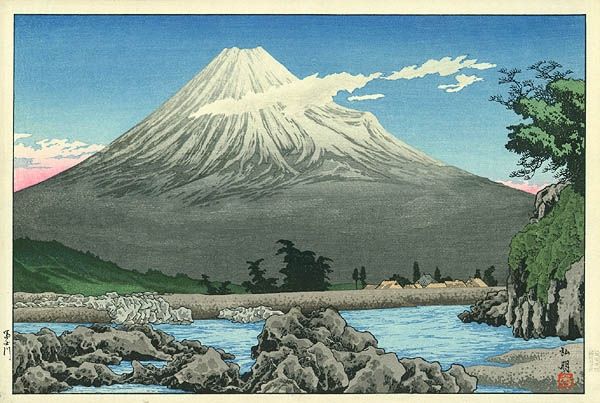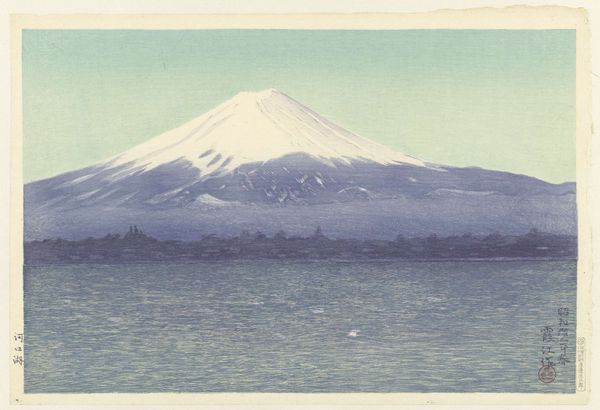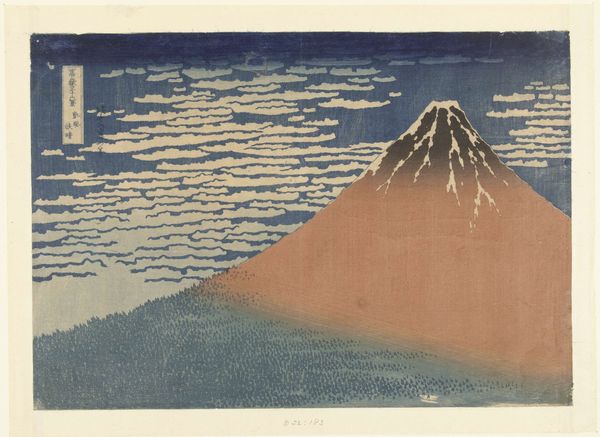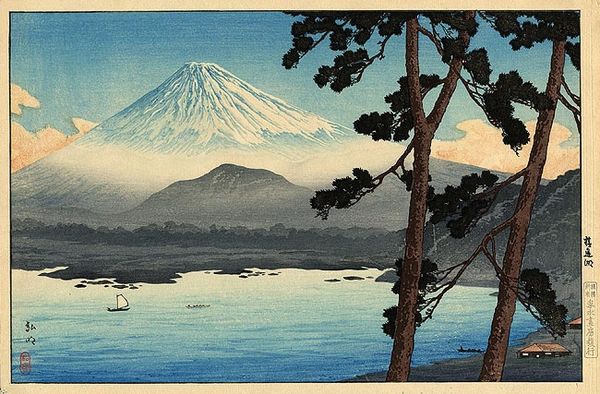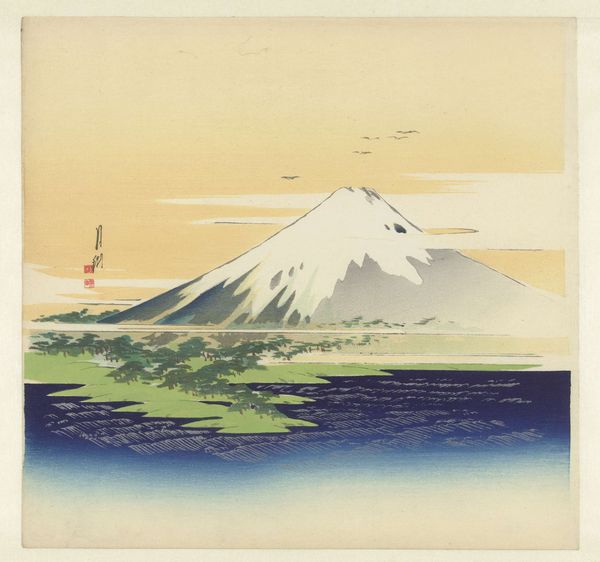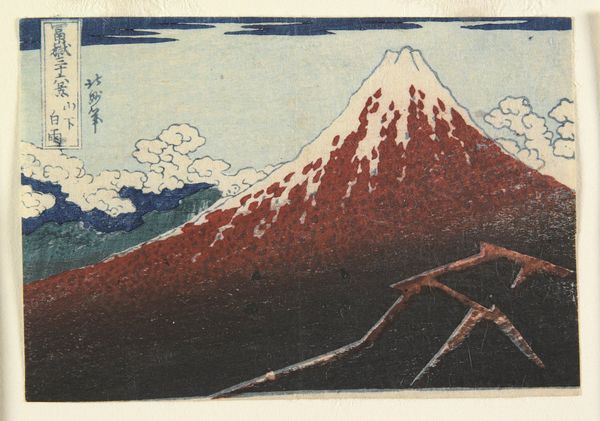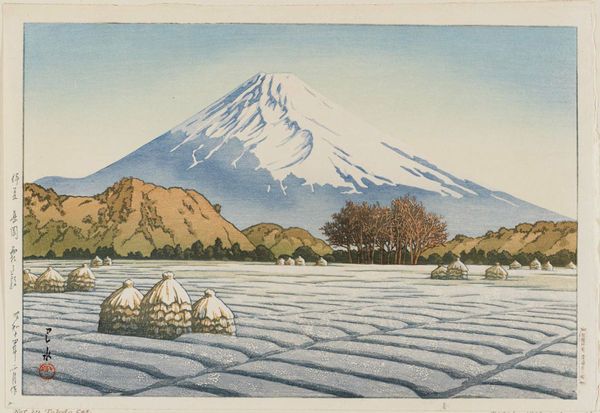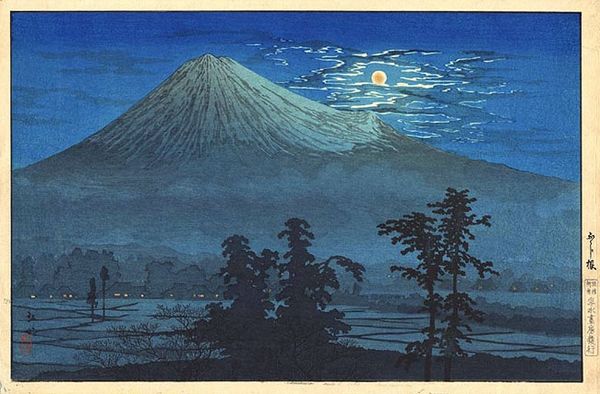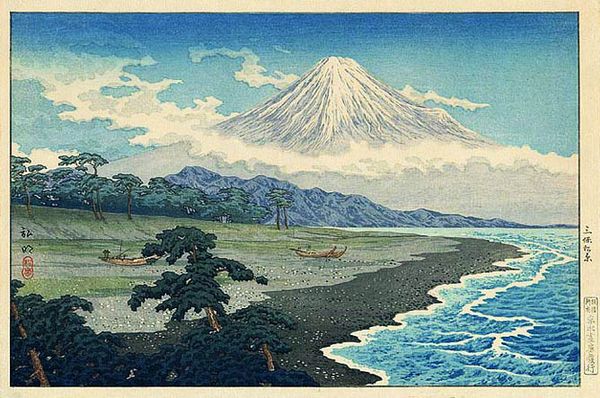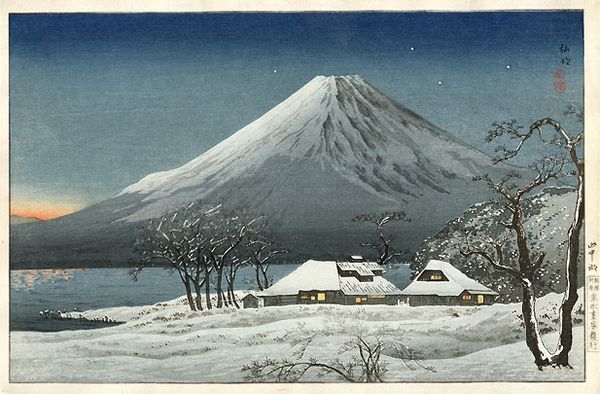
Dimensions: 14 3/16 x 20 5/16 in. (36.04 x 51.59 cm) (image)22 7/8 × 28 7/8 × 1 1/2 in. (58.1 × 73.34 × 3.81 cm) (outer frame)
Copyright: No Copyright - United States
Curator: Looking at "Fuji River" by Hasui Kawase from 1933, now residing here at the Minneapolis Institute of Art. It’s a beautiful example of the shin-hanga movement rendered in woodblock print. What's your first take? Editor: Wow, a sense of serenity washes over me. That iconic mountain against the pale sky...it feels both monumental and whisper-quiet. It's got a contemplative, almost melancholic vibe to it. Curator: Absolutely. Fuji-san, or Mount Fuji, carries immense symbolic weight in Japanese culture. As a sacred peak and representation of natural beauty, its image is frequently deployed as a potent national symbol and a point of spiritual grounding. What feelings arise as you engage with this image? Editor: Well, beyond the initial calmness, I find a delightful tension between the simplicity of form and complexity of texture. The granular detail of the riverbed versus the smooth, almost dreamlike quality of the mountain itself is lovely. There is also a subtle visual interplay between blue-tones and brown and green that add to the contemplative vibe. What might this kind of tension have signified culturally in Japan during that era? Curator: During the early Showa period, Japan was modernizing rapidly, yet there was a simultaneous embrace of traditional aesthetics. Kawase and the shin-hanga artists often evoked nostalgia for pre-industrial landscapes and lifestyles, emphasizing natural beauty as a counterpoint to urbanization. The image suggests continuity and an enduring connection with nature despite sweeping social changes. Also, given that it was the pre-war era, there is perhaps also a degree of escapism evoked by the natural idyll presented here. Editor: That's fascinating. Thinking about that cultural context really enriches the image. This is really cool – that a simple landscape is a carrier for memory and identity. And you know what else I’m noticing? I'm realizing there’s actually an exquisite tension, which in turn invites some much-needed calm. Curator: Indeed, a multi-layered cultural message couched in understated beauty. That, perhaps, is why it continues to resonate. Editor: Well, it has given me a whole new perspective and appreciation. Thanks for sharing your iconographic insights. Curator: Likewise. It is often revealing to hear an intuitive perspective and trace its echoes.

